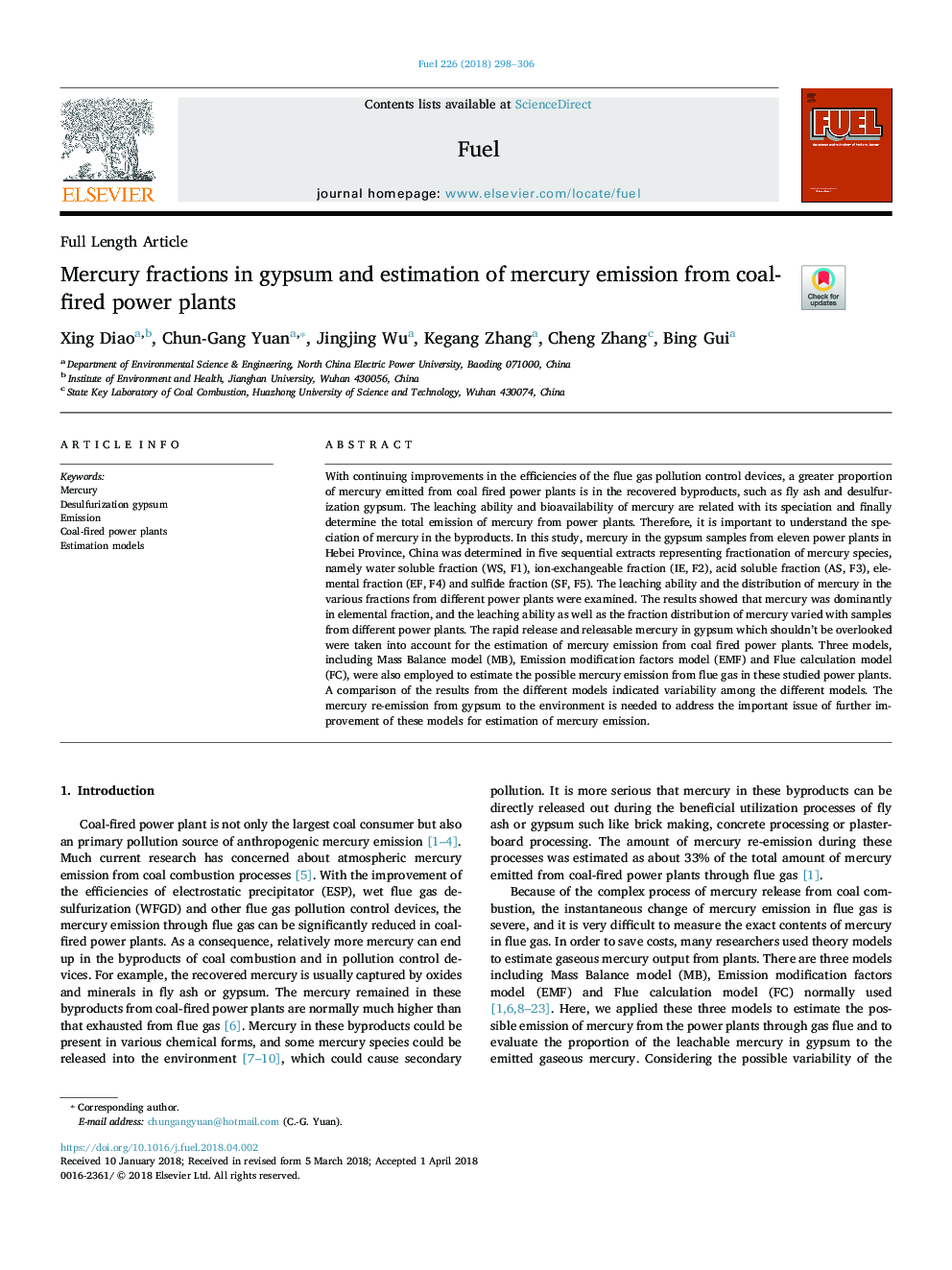| Article ID | Journal | Published Year | Pages | File Type |
|---|---|---|---|---|
| 6630900 | Fuel | 2018 | 9 Pages |
Abstract
With continuing improvements in the efficiencies of the flue gas pollution control devices, a greater proportion of mercury emitted from coal fired power plants is in the recovered byproducts, such as fly ash and desulfurization gypsum. The leaching ability and bioavailability of mercury are related with its speciation and finally determine the total emission of mercury from power plants. Therefore, it is important to understand the speciation of mercury in the byproducts. In this study, mercury in the gypsum samples from eleven power plants in Hebei Province, China was determined in five sequential extracts representing fractionation of mercury species, namely water soluble fraction (WS, F1), ion-exchangeable fraction (IE, F2), acid soluble fraction (AS, F3), elemental fraction (EF, F4) and sulfide fraction (SF, F5). The leaching ability and the distribution of mercury in the various fractions from different power plants were examined. The results showed that mercury was dominantly in elemental fraction, and the leaching ability as well as the fraction distribution of mercury varied with samples from different power plants. The rapid release and releasable mercury in gypsum which shouldn't be overlooked were taken into account for the estimation of mercury emission from coal fired power plants. Three models, including Mass Balance model (MB), Emission modification factors model (EMF) and Flue calculation model (FC), were also employed to estimate the possible mercury emission from flue gas in these studied power plants. A comparison of the results from the different models indicated variability among the different models. The mercury re-emission from gypsum to the environment is needed to address the important issue of further improvement of these models for estimation of mercury emission.
Related Topics
Physical Sciences and Engineering
Chemical Engineering
Chemical Engineering (General)
Authors
Xing Diao, Chun-Gang Yuan, Jingjing Wu, Kegang Zhang, Cheng Zhang, Bing Gui,
